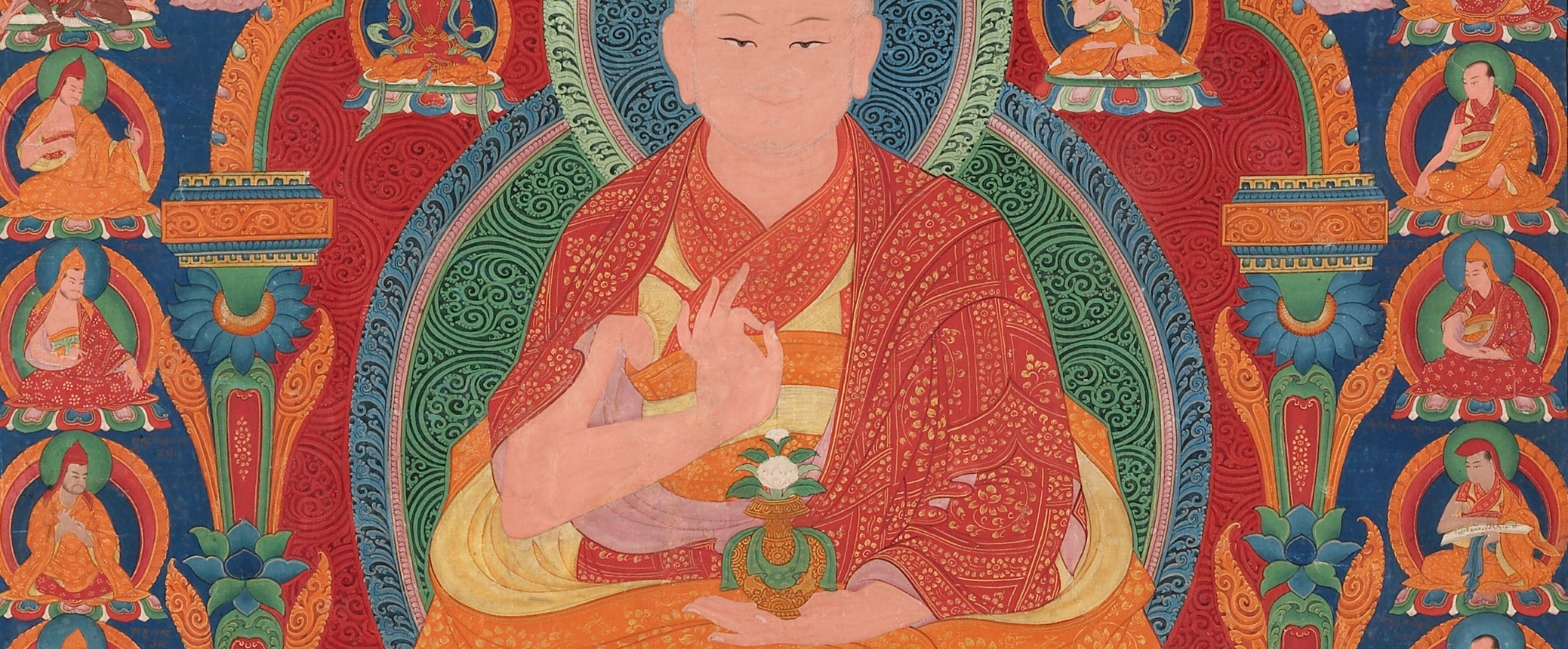
With the destruction of Indian Buddhism in 1203, Tibet’s previous source of artistic inspiration was wiped out. Tibetan artists then turned to Nepal, the only nearby surviving center of traditional Buddhist art, and also home to the Newar artists of the Kathmandu Valley who were well known and sought out for their extraordinary skill in painting, sculpture, and wood working.
Like Tibetan artists, the Newars originally followed a local Indian style, but had since gradually developed their own distinctive style. Within a generation after the disappearance of Indian Buddhism, Tibetans had copied and learned the Newar style, or Beri as it is now known. The style took root and existed for over four centuries, reaching its height from 1360-1460 when it was adopted as Tibet’s universal painting style.
The Nepalese Legacy in Tibetan Painting traces the chronological development of the Beri style, highlighting key stylistic features such as dark indigo blue backgrounds, predominant red tones, decorative scrollwork, and distinctive architectural details. Among the most noteworthy works from the exhibition are a masterful painting containing four minutely-detailed mandalas created in the mid-15th century by Newari artists; the last two known major commissions in the Beri style; and important loans from the Walters Art Museum, the Los Angeles County Museum of Art, the Metropolitan Museum of Art, and a number of private collections.
Earlier scholars tended to oversimplify geographical range and sectarian scope of the Beri style, assuming that the majority of Beri paintings were commissioned by the Sakyapa School of Tibetan Buddhism. As a result, a number of important Beri works have hitherto been misidentified as Sakya art. In part, The Nepalese Legacy seeks to correct the erroneous limitation of the Beri style to the Sakya School of Tibetan Buddhism, and to demonstrate the full extent of its chronological development, religious patronage, and geographic scope.
Curated by David Jackson
Send Your Comments
Comments are moderated, and will not appear on this site until the Rubin has approved them.

